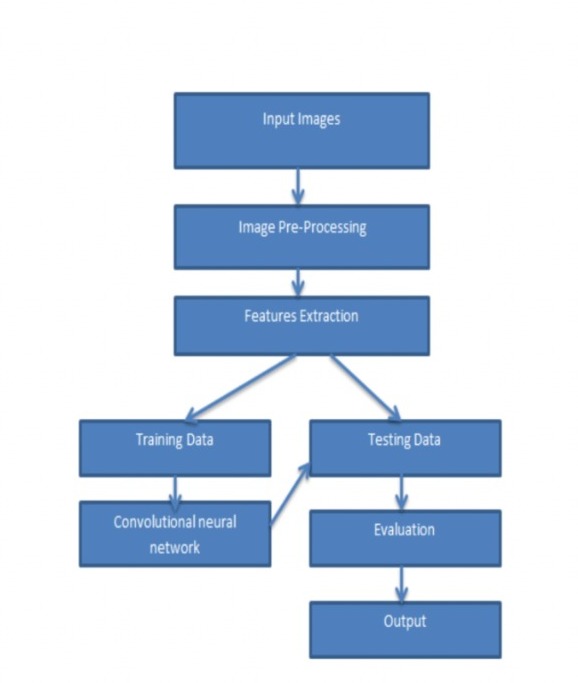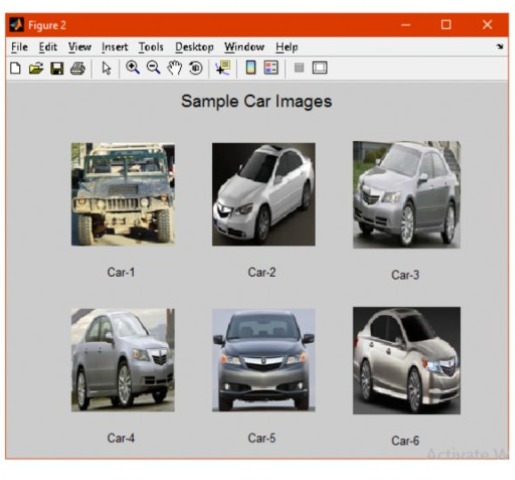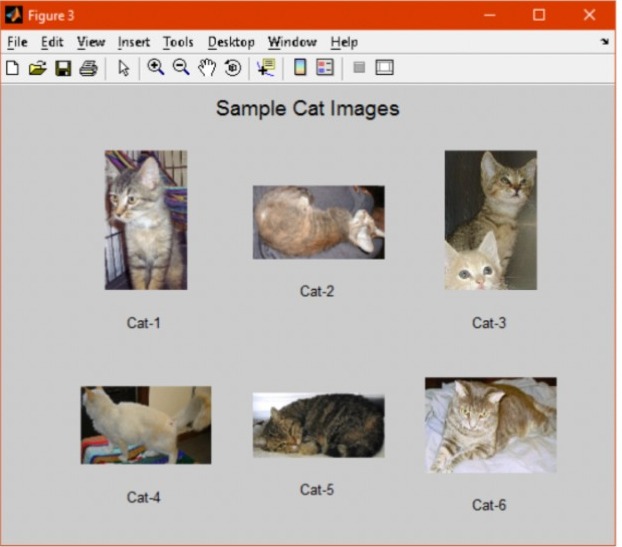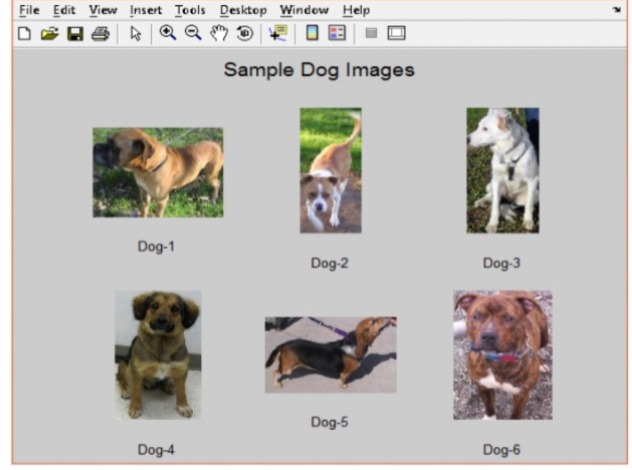CN7026 Cloud Computing Assignment Sample
HERE IS SAMPLE OF CN7026 Cloud Computing Assignment
Introduction
Deep learning methods are one of the machine learning models which are having the similar working model of artificial neural network. The deep learning algorithms are used to process the information and enhance the thinking power. The deep learning methods have three different layers for processing namely input layer, hidden layer and output layer. In deep learning neural network, the primary layer is input layer.
The data is gone through each layer with appropriate computation process. The results are passes to the next layer in the network. Finally, the results will be given in output layer. Each layer contains some activation function to process the data.
Feature extraction is one of the powerful techniques which are used for image classification. Finding the appropriate features are more essential to classify the images. Features from the images are requires for training to learn. This process will help the algorithm to understand the class of the image. Using these deep learning methods, the complex extractions of features are easy.
These methods can provide high level of data abstraction for classification of images. Deep learning calculations are helpful to provide support for various unsupervised learning process.
Objective of the coursework
Image classification
Classification of images is one of the important processes of images processing. The primary objective of image classification is finding and categorizing the appropriate image using class labels. Generally there are two types of classification methods available.
Those are classification with supervised learning methods and classification with unsupervised learning methods. The process of image classification is categorized into two main stages such as Training the framework and Testing. These two stages are used for image classification with some data samples. The dataset can get collected from some UCI repository.
The natural image classification is the main objective of this research work. This classification identifies and categorizes some natural images like airplanes, automobiles, cat, dog, bird and etc. There are 10 different class of images were selected for this image classification. Deep learning methods are used for making image classification.
Overview of the coursework
Image classification efficiency is compared with two different methods (Cheng 2017). The researcher used classification of animal and bird image using deep neural network. They used inception v3 architecture type for this image classification. This model contained more than 50 layers in the network for image classification. The Recurrent neural network was used text classification of text whereas the convolutional neural network was used for image classification.
The transfer learning methods was used to get the enhanced accuracy. The used model produced 98% of classification accuracy with convolutional neural network. The transfer learning methods was used to process the data and transfer the knowledge to the next process. This kind of process can save the computation time and produce the higher accuracy.
New approaches of image classification are proposed (Liu 2015). Deep learning methods are used to provide the process of classifying the images. The data collection, pre-processing and feature extraction are the common steps in the process of image classification. Different classifiers are used for classification based on features. Features are extracted using various filters in machine learning.
The features are extracted based on three different components such as color, shape and texture. Convolutional neural network is used for this image classification process. This network contains four different layers for making classification effectively.
Deep learning kernel function is used for image classification (Luis Perez 2017). They highlighted that their research process had two different segments such as feature extraction and classification these methods are used for effective image classification. Deep learning methods have the capacity to produce feature extraction and classification of image.
The kernel functions are used for image classification. This method contains some set of process like data collection, pre-processing, Parameter initialization of network, feature extraction, apply training process for image and make classification. Three different layers are involved in this process that are input layer which is used to get the input values, hidden layer which are used to compute all the activation function to make feature extraction and the output layer which is used to produce the results.
These three layers are mainly focusing the values which are given through some calculation. Convolutional neural network is used for image classification.
Deep learning methods are also used for medical image classification (Q.Zou 2015). Healthcare sector is one of the essential sectors which are used to provide treatment for various diseases to human. The used of deep learning methods are essential in the area of disease identification and prediction. Most of the diseases are identified using reports and symptoms.
The deep learning methods are used to identify the diseases using the medical images. The support vector machine and convolutional neural network methods are involved image identification process and classification. SVM is the powerful classifier which can produce more accuracy in image classification. The accurate identification of disease using image can be depends on two different processes. Those are image acquisition and image interpretation.
Image acquisition is used to collect some real medical images using tools. Image interpretation is used to extract the features in images which are helpful to identify the appropriate disease. Different diseases images are used in the ide notification and classification process with training of convolutional neural network.
Convolutional neural network was used in the image classification (Qishuo Gao 2018). This algorithm is effectively working on different dataset for the purpose of image classification. The performance evaluation was done with the help of some quality metrics such as Mean Squared Error (MSE) and accuracy in classification. The Feed Forward neural network is applied to get the higher accuracy in image classification. The dataset is divided for two different processes such as training the model and testing the efficiency.
The training methods are used to provide some learning process for identifying the images. The testing methods are used to evaluate the efficiency of the training model. The back propagation methods are used to adjust the weight of neural network for increasing the prediction accuracy. This convolutional neural network contains different architectures to produce the enhanced results.
Some innovations are proposed for image classification using the convolutional neural network (Spanhol 2016). Convolutional neural network used different architectures to produce the result. LeNet-5 is one of the important architecture of CNN. This research work produced some process to change this LeNet-5 into SENet model. This model can produce effective prediction in images identification and classification.
This LeNet-5 contains three convolutional layers and two pooling layers. This network type contains one fully connected layer and ReLu activation function for image classification. The classification process involves image acquisition and pre-processing methods. Feature extraction is one of the main parts for making image classification.
The effective image classification is done with the use of convolutional neural network (Wei Hu. 2015). This network is one of the famous deep learning models which contain four effective layers. The automatic classification is done with the help of training process of neural network. This training helped the network to make classification effectively. MNIST dataset is selected for classification process. For training, the color images are converted into gray scale images. Using these images, the training has been given.
These methods are helpful to reduce the complexity in classification process. SVM is one of the famous machine learning classifiers which is used to produce the effective results on image classification. The complex classification process can be handled using this SVM for getting the improved results. The feature extraction is used to extract the important features to make the classification. Convolutional neural network contain various filters to make this extraction process of features.
The transfer learning approach is used in image classification (Wei Li. 2017). The convolutional neural network is used for making the classification process using different images. This network contains different layers such as input layer, convolutional layer, ReLu activation function, Pooling, Fully connected layer and Softmax layer. The transfer learning methods was used to transfer the gained knowledge to the next process for making the computation effectively.
This process depends on the selection of architecture type in convolutional neural network. There are five important architecture type was discussed in this research work. Those are LeNet, AlexNet, VGG, GoogLeNet and ResNet architectures. The pre-trained models are used for making the transfer learning method in image classification. Image acquisition and pre-processing of images can helped to reduce the complexities in image classification. The implementation was done with the help of MATLAB software.
Methodology
Convolutional Neural Network
The convolutional neural network is designed with individual or multiple blocks with layers which contains sub-sampling. This convolutional neural network contains the following layers for computation process such as Convolutional layer, Pooling layer, Fully connected layer and Activation function. With the help of these layers, The proposed framework can effectively work in the process of classification of images.
The convolutional layer
This layer is the primary layer for CNN. This layer is sued to make formation of input images for computation process. The feature leaning process can be applied for extracting the features in input images. The feature map is used to select the features in particular image. This will help the network to make the appropriate classification. This layer helps to reduce the dimensionality reduction for making the large image into small. This kind of process can increase the speed of computation function for making classification. The input image can be segmented into regions for finding features.
Pooling layer
This is the following layer of convolutional layer which is used to calculate the value of input images. This pooling layer provides two different functions like average pooling and max pooling. The average pooling is used to calculate the average values of input image which contains more regions for feature extraction. The max pooling layer is used to calculate the maximum values of input image for further process. This pooling layer handles the feature map for computation process. The Man pooling is one of the pooling method which can be used based on the requirement of the function.
Fully-connected layer
This layer is mainly involved for classification process. This makes the classification process with the help of neural network. This supports that all the input neurons are connected with next layers for making the effective process. This performs classification operationsthat are important to classify the images using class labels.Architectures:
The convolutional neural network contains different architectures for providing the image classification process. The selection of architecture provides various combinations of layers to make the feature extraction process and classification of image.
LeNet-5
This model contains five layers for making classification using the input dataset. This model contains 3 convolutional layers and 2 pooling layer for computation process. This layer also contains 1 Fully-connected layer and one output layer. By using this architecture, the image classification is simple and effective. This architecture can handle huge amount of dataset for classification process. Sigmoid activation function is used to make including non-linearity process in the computation. The Euclidean Radial Basis Function is used for classifying different images based on the class labels.
AlexNet
This is also one of the famous architecture of convolutional neural network which has larger size of network compared with LeNet. This architecture contains 8 convolutional layers and 5 fully connected layers. The ReLu activation function is used in this architecture for making classification. The fully connected layer is mainly used for making classification. This network model contains 5 fully connected layers for effective image classification. This model can be used to handle the different variety of images which need to be classified. Max Pooling is selected method for the classification in this model.
VGG Net
This architecture model contains different filters which are mainly used for feature extraction. This model contains 6 different Convolutional neural network configurations and use small filters which helps to keep all the parameters.
The training images are cropped with particular size to avoid the dimensionality problem. These small filters are used to make pre-initialization of layers which can used to make deep layer process. In this pre-initialized process, first 4 convolutional layers and 3 fully connected layers are used.
GoogLeNet
This network models contains various parameters and different parameters for making classification using images. This model contains 22 layers. The size of the filters gets different when the different image dataset is used. The inception module is used to enhance the computation process of this network model. This module can be used to reduce the dimensionality reduction. This model can use ReLu activation function for classification.
This model produced the significant accuracy than the other architecture models. The average pooling method is used for calculating the average value of images. By using this inception module, the overfitting and gradient problems can be avoided.
ResNet
Most of the network process can be affected using gradient descent problem. To avoid these problems, normalization techniques are used. The well trained model can be used to avoid overfitting problem in computation. The ResNet is one of architecture model which is mainly used to reduce the size of input images and overfitting problem. The identity mapping method is used to avoid various problems in image classification.
The pre-trained models can effectively working with this identity mapping. This framework provides the effective solution for degradation problem. This model can be used residual mapping method instead of underlying mapping.
Simulation
Introduction of Dataset
For this research work the dataset is taken form Kaggle repository. The CIFAR 10 dataset is selected form making natural images classification. His dataset contains 10 different classes like airplane, automobile, bird, cat, deer, dog, frog, horse, ship and truck. There are 60,000 images in this dataset. For this research work, only 5000 images are selected.The selected dataset contains 6 classes namely airplane, car, cat, dog, flowers and fruits.
Input Representation
System Model
The system model shows the flow of proposed process for making classification of input images. This diagram is helpful to make the classification process with appropriate activities. This classification process includes image acquisition, pre-processing, feature extraction and network model execution.

Fig No: 1 Workflow model
Input Images:
Image acquisition is the initial process for research work. This specifies the collection of input images for classification. For this research work, the input images are taken form Kaggle repository.
Pre-processing
Pre-processing is the main method which is used to avoid the redundancy data from the input images. The noisy images are also removes using pre-processing methods to make effective process. The arrangement of images in a particularly order and maintaining the same size of images for process is the main objective of pre-processing. After completing the pre-processing, the dataset is ready for computation process.
Feature Extraction
Extracting important components is the main aim of feature extraction. This will help the identification process of an image. Finding and selecting important features are more essential for this feature extraction. The global features of an image are color, shape and texture. Various filters are used for extracting the image features.
Dataset partitioning
The input dataset is divides into two main segments. One is for training process and the other is for testing. The used dataset contains 5125 images with six different classes.
Training Data
The training dataset contains 80% of data which is used for training. This dataset is split into 70-10 ratio for training and validation.
Testing data
Testing is used to check the performance efficiency of used model. For testing, 20% of data is used.
| Class name | Total images | Training | Validation | Testing |
| airplane | 727 | 509 | 73 | 145 |
| Car | 968 | 678 | 97 | 194 |
| Cat | 885 | 620 | 89 | 177 |
| Dog | 702 | 491 | 70 | 140 |
| flower | 843 | 590 | 84 | 169 |
| fruits | 1000 | 700 | 100 | 200 |
Table No: 1 Dataset information
Convolutional neural network
The CNN is applied on the training dataset to make classification of images. There are four main layers are considered in the process of CNN such as convolutional layer, pooling layer, fully connected layer and activation function. The AlexNet architecture is used for this natural image classification process. AlexNet is the efficient model which can use 5 convolutional layers and 3 fully connected layer.
Procedures for Implementation
Step 1: Analyze the images which contains 10 different type of images
Step 2: Provide training for Convolutional neural network for analyzing images
Step 3: Execute and evaluate the training performance using accuracy
Step 4: calculate the elapsed time
Step 5: evaluate the performance accuracy and elapsed time for classifying 10 different images in the CIFAR 10 dataset.
Results obtained:

Fig No: 2 Sample images for airplanes

Fig No: 3 Sample Images for Car

From these results, we can understand that the used convolutional neural network model is effectively working in image classification. The accuracies are calculated for all three phases like training, validation and testing.
Confusion Matrix
The performance evaluation is done with the help of confusion matrix. This consist four components for measuring accuracy such bas true positive, true negative, false positive and false negative.
Fig No: 12 Confusion matrix for 6 different classes.
| Class name | Training | Validation | Testing |
| airplane | 96.88 | 95.71 | 94.33 |
| Car | 95.85 | 95.62 | 93.65 |
| Cat | 96.28 | 95.62 | 94.82 |
| Dog | 95.60 | 95.05 | 94.41 |
| flower | 96.25 | 95.52 | 93.76 |
| fruits | 96.31 | 95.62 | 94.89 |
Table No: 2 Accuracy table
This table shows different accuracies in training, validation and testing with 6 different classes.
Discussion
Deep learning methods are effective in image classification. Natural image classification is done with the help of convolutional neural network. The AlexNet architecture is used for making classification with 6 different images. The convolutional layer is used for reducing the dimensionality. The pooling layer is used for calculating the computation value. The activation function is used to process the features and the fully connected layers are used to make classification of images. The CIFAR 10 dataset is used for this research work.
Conclusion
Image classification is one of the important process which helps to make easy identification. The artificial intelligence is used to provide training to the machine for making automatic prediction and classification. Deep learning methods are used to make classification of images with convolutional neural network models. MATLAB tool provide the implementation support for convolutional neural network for natural image classification.
The efficiency of this model is evaluated using confusion matrix. The execution results are highlighted the overall accuracy for three different phases. The training phase achieved 96.16% overall accuracy. For validation phase, 95.52% accuracy is achieved. The testing phase achieve 94.331% overall accuracy. These results showed that the convolutional neural networks are effectively performed in natural image classification.
References:
Bibliography
Cheng, G. L. (2017). Remote Sensing Image Scene Classification Using Bag of Convolutional Features. IEEE GEOSCIENCE AND REMOTE SENSING LETTERS, Vol-14, issue-10, pp 1735-1739.
Liu, S. &. (2015). Very Deep Convolutional Neural Network Based Image Classification Using Small Training Sample Size. 3rd IAPR Asian Conference on Pattern Recognition.
Luis Perez, J. W. (2017). The Effectiveness of Data Augmentation in Image Classification using Deep Learning. Computer Vision and Pattern Recognition-arXive.org.
- Zou, L. N. (2015). Deep learning based feature selection for remote sensing scene classification. IEEE Geosci. Remote Sens. Lett., vol. 12, no. 11, pp. 2321-2325.
Qishuo Gao., S. L. (2018). Hyperspectral Image Classification Using Convolutional Neural Networks and Multiple Feature Learning. Remote Sensing, Volume 10 Issue 2.
Spanhol, F. A. (2016). Breast cancer histopathological image classification using Convolutional Neural Networks. International Joint Conference on Neural Networks (IJCNN).
Wei Hu., Y. H. (2015). Deep Convolutional Neural Networks for Hyperspectral Image Classification. Journal of sensors.
Wei Li., L. W. (2017). Hyperspectral Image Classification Using Deep Pixel-Pair Features. IEEE Transactions on Geoscience and Remote Sensing, ,, Vol- 55, issue-2.
- Ma, J. G. (2015). Hyperspectral image classification via contextual deep learning. EURASIP J. Image Video Process., ., vol. 20, no. 1, pp. 1-12, .
24/7 Chat Support | Get A+ Grade | Written by Top-Notch Subject Experts | 20% Off 1st Order |
Know more about UniqueSubmission’s other writing services:

